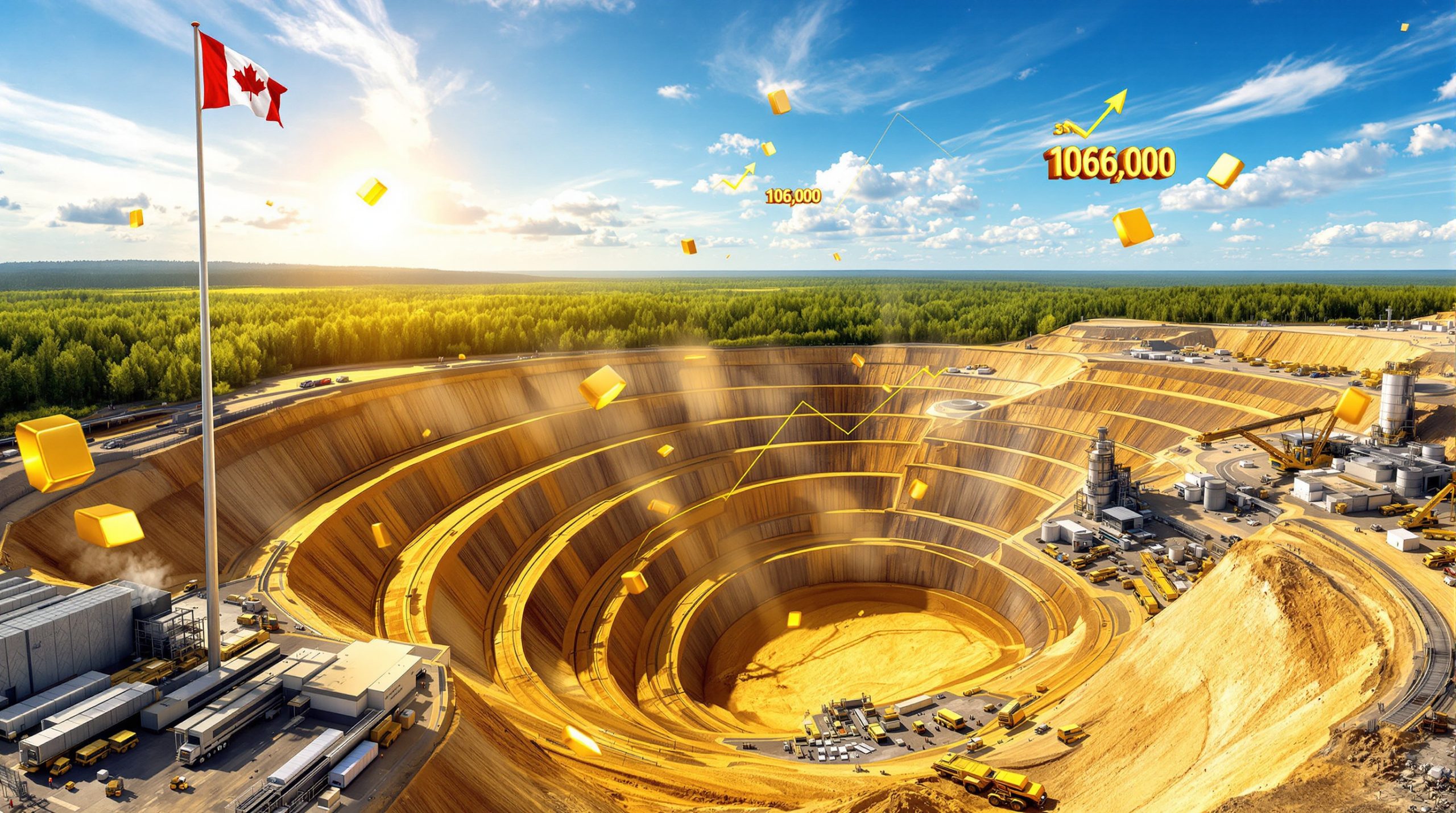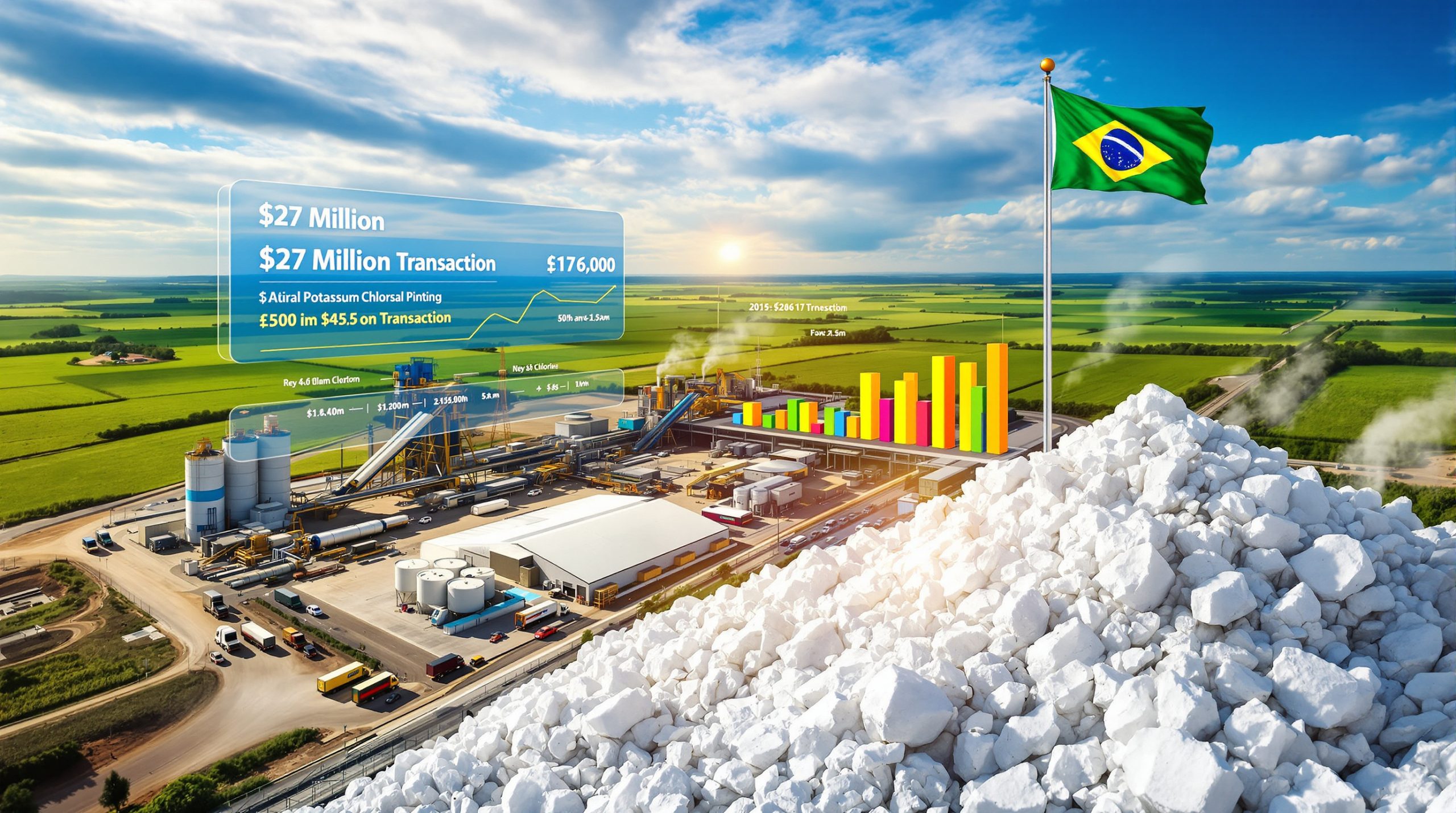The World’s Ten Largest Bauxite Mines in 2025: Global Production Leaders
What is Bauxite and Why is it Important?
Bauxite serves as the primary ore in aluminum production, typically containing between 30-60% aluminum oxide (alumina). This critical mineral resource forms the foundation of the global aluminum industry, which impacts countless sectors from aerospace to construction and consumer goods.
According to geological surveys, “Bauxite is the world’s principal aluminum source, with deposits requiring 4–5 tonnes of ore to produce 1 tonne of alumina” (U.S. Geological Survey, 2023). The significance of bauxite cannot be overstated—it represents the first crucial step in the aluminum value chain, one of the most versatile and widely used metals on the planet.
The aluminum derived from bauxite offers unparalleled combinations of strength, lightweight properties, and corrosion resistance. These characteristics make it indispensable for modern industries focused on sustainability and efficiency.
Global Bauxite Production Landscape
The global bauxite industry is substantial, with over 229 active mines operating worldwide. According to GlobalData’s mining database, the top 10 mines alone account for a remarkable 176 million tonnes per annum (mtpa) as of 2023, highlighting the concentration of production in major mining regions.
This production concentration creates both opportunities and vulnerabilities in the global supply chain. Three countries—Australia, Guinea, and Brazil—dominate the landscape, controlling 80% of global output through their largest operations.
Where Are the World’s Largest Bauxite Deposits Located?
The geographic distribution of the world’s premier bauxite mines reveals interesting patterns of resource concentration:
- Australia hosts 4 of the top 10 mines, leveraging advanced mining technologies and established infrastructure
- Republic of Guinea contains 4 of the top 10 mines, with the Boke region emerging as Africa’s aluminum powerhouse
- Brazil contributes 2 of the top 10 mines, primarily in the mineral-rich Para state
Guinea’s Boke Basin alone holds over 7.4 billion tonnes of bauxite reserves, representing approximately 26% of global deposits (U.S. Geological Survey, 2023). This exceptional concentration of high-grade ore explains the country’s growing prominence in global supply chains.
Australia maintains its production leadership through the Weipa Mine, which contributes approximately 20% of global production according to Rio Tinto’s Annual Report (2023). The mine’s strategic location on the Cape York Peninsula provides ideal logistics for Asian markets.
What Are the Top 10 Bauxite Mines by Production?
10. Paragominas Mine (Brazil)
Located in Para, Brazil, the Paragominas Mine produces 10.9 mtpa (2023) under the ownership of Norsk Hydro A. This surface greenfield operation is expected to continue production until 2041, representing a stable long-term supplier to global markets.
The mine employs a unique long-distance slurry pipeline system that transports bauxite over 244 kilometers to processing facilities, reducing transportation carbon emissions by approximately 18% compared to traditional methods.
9. MRN Mine (Brazil)
The MRN Mine in Para, Brazil, produces 11.47 mtpa (2023) under Glencore Plc’s management. This greenfield surface operation has a relatively shorter remaining lifespan, with operations projected until 2027.
Despite its limited operational horizon, the mine has pioneered reforestation techniques that have become industry standards across Brazil, with over 6,500 hectares successfully rehabilitated using native species.
8. Gove Mine (Australia)
Rio Tinto’s Gove Mine in Australia’s Northern Territory contributes 11.57 mtpa (2023) to global supply. As a brownfield surface operation, it builds on existing infrastructure while expanding production. Operations are expected to continue until 2030.
The mine has implemented comprehensive water management systems that reduce freshwater consumption by 22% compared to similar operations, addressing one of bauxite mining’s most significant environmental challenges.
7. GAC Mine (Guinea)
The Guinea Alumina Corporation (GAC) Mine produces 11.97 mtpa (2023) under Emirates Global Aluminium’s management. This surface mine in Boke, Republic of Guinea, is expected to operate until 2039.
GAC has invested over $120 million in local infrastructure development, including roads, schools, and healthcare facilities, creating a model for community engagement in Guinea’s mining sector.
6. Boffa Bauxite Mine (Guinea)
Aluminum Corporation of China (Chalco) operates the Boffa Bauxite Mine with an annual production of 13.5 mtpa (2023). This greenfield surface operation in Boke boasts the longest projected lifespan among the top 10, with operations expected to continue until 2081.
The mine features Guinea’s first fully integrated rail transportation system, designed to minimize environmental disruption while maximizing operational efficiency for the mine’s extraordinary 58-year projected lifespan.
5. Boddington Bauxite Mine (Australia)
South32’s Boddington Bauxite Mine in Western Australia produces 13.66 mtpa (2023). This greenfield surface operation is expected to continue until 2036.
The mine has piloted carbon capture storage (CCS) for refinery-linked emissions, reducing CO2 output by 12% annually according to South32’s Sustainability Report (2023). This positions Boddington at the forefront of low-carbon aluminium production technologies.
4. Sangaredi Mine (Guinea)
Producing 14.28 mtpa (2023), the Sangaredi Mine is operated by the Government of Guinea. This brownfield surface operation in Boke is projected to continue until 2038.
“Guinea’s Sangaredi Mine replanted 12,000 hectares of rainforest in 2023, achieving 94% post-mining biodiversity restoration” (ICMM Case Study, 2024). This achievement demonstrates that high-volume production can coexist with environmental stewardship.
3. Huntly Mine (Australia)
Alcoa’s Huntly Mine in Western Australia produces an impressive 22.19 mtpa (2023). As a brownfield surface operation, it leverages decades of operational experience to maximize efficiency, with operations expected until 2032.
Huntly has pioneered progressive rehabilitation techniques where mined areas are reclaimed concurrently with ongoing operations, reducing the overall environmental footprint while maintaining production volumes.
2. SMB-Winning Boke Bauxite Mining Project (Guinea)
The SMB-Winning consortium’s Boke project in Guinea produces 32.02 mtpa (2023), making it the second-largest operation globally. This surface mine, led by the Winning International Group, represents one of the fastest-growing bauxite operations in recent history.
The operation has transformed Guinea’s export infrastructure, developing the country’s first purpose-built bauxite export terminal capable of handling capesize vessels, significantly reducing logistics costs for West African bauxite.
1. Weipa Mine (Australia)
Rio Tinto’s flagship Weipa Mine in Queensland, Australia, ranks as the world’s largest bauxite operation with production of 35.13 mtpa (2023). This brownfield surface operation is expected to continue until 2058, ensuring decades of stable supply.
The mine uses autonomous haulage systems (AHS) for 24/7 operations, reducing downtime by 15% according to Rio Tinto (2023). As Dr. Simon Trott, Rio Tinto CEO, noted: “Weipa’s digital transformation aligns with net-zero targets through AI-optimized fuel efficiency” (Mining Technology, 2024).
How Do Mining Companies Compare in Bauxite Production?
The global bauxite landscape is dominated by several key players, each employing different strategies and technological approaches:
- Rio Tinto leads production with two top-10 mines (Weipa and Gove), yielding a combined 46.7 mtpa. Rio Tinto’s $1.4B investment in drone-based exploration (2022) increased resource accuracy by 18% (Rio Tinto Investor Briefing, 2024).
- Winning International Group manages Guinea’s SMB-Winning project (32.02 mtpa), representing the fastest growth trajectory among major producers.
- Alcoa operates the Huntly Mine (22.19 mtpa), maintaining strong ESG credentials with a 4.8/5 score on MineHutte’s 2023 sustainability index.
- Government of Guinea directly controls the Sangaredi Mine (14.28 mtpa), using its revenues to fund national development initiatives.
- South32 operates Boddington (13.66 mtpa), focusing on technological innovation in carbon reduction.
Ownership Structure Analysis
The ownership model of leading bauxite mines reveals complex geopolitical considerations:
International mining conglomerates like Rio Tinto and Glencore bring capital and technology but face increasing requirements for local beneficiation. National aluminum producers such as Aluminum Corporation of China (Chalco) and Emirates Global Aluminium pursue vertical integration strategies to secure supply chains.
Interestingly, China’s Aluminum Corp (Chinalco) now controls 50% of Guinea’s output via various partnerships (IMF, 2023), highlighting the strategic importance of bauxite in global trade relations.
Government entities like the Government of Guinea maintain direct ownership stakes to ensure national economic benefits from resource extraction, though this model presents challenges in securing capital for expansion.
What is the Future of Bauxite Mining?
Projected Operational Lifespans
The operational horizons of major bauxite mines vary significantly:
- Longest projected operation: Boffa Bauxite Mine (until 2081) plans phased renewable energy adoption with 15% solar by 2030 (Emirates Global Aluminium, 2023).
- Shortest projected operation: MRN Mine (until 2027), now focusing on intensive rehabilitation strategies for post-mining land use.
- Average lifespan of top mines: Exceeds 30 years, indicating stable long-term supply outlook for aluminum manufacturers.
Production Capacity Trends
The combined production capacity of the top 10 mines exceeds 176 million tonnes annually, representing a significant portion of global bauxite output. This concentration creates both efficiency advantages and supply vulnerability.
Technological innovation is driving productivity improvements of 3-5% annually across major operations, potentially extending mine lifespans beyond current projections while reducing environmental impacts.
FAQ About Global Bauxite Mining
What is the difference between greenfield and brownfield mines?
Greenfield mines represent new developments on previously unexplored land, requiring full infrastructure development but often yielding higher grades. Brownfield mines expand existing operations with established infrastructure, offering lower capital costs but potentially lower ore grades.
According to the International Council on Mining and Metals (ICMM), brownfield expansions typically reduce development costs by 15-30% compared to equivalent greenfield projects.
Which country has the most bauxite mines in the top 10?
Australia and Guinea each host four mines in the top 10, demonstrating their dominance in global bauxite production. This geographic concentration creates strategic advantages through shared infrastructure and knowledge transfer while also presenting supply chain vulnerability during regional disruptions.
How is bauxite processed after mining?
After extraction, bauxite undergoes the Bayer process to produce alumina (aluminum oxide), which is then smelted using the Hall-Héroult process to produce aluminum metal. The Bayer Process has seen remarkable water recycling innovations that have reduced usage by 30% in modern refineries (Aluminum Association, 2023).
The process typically yields 2 tonnes of red mud waste for every tonne of aluminum produced, creating significant environmental management challenges that leading producers are addressing through dry stacking and beneficial reuse initiatives.
What factors influence bauxite mine productivity?
Key productivity factors include ore grade (aluminum content), mining technology (autonomous vs. conventional), infrastructure quality (rail, port, energy), operational efficiency (equipment utilization rates), and proximity to processing facilities or export terminals.
Environmental conditions, particularly rainfall patterns in tropical mining regions, can significantly impact production schedules, with wet season disruptions reducing annual output by 8-12% in Guinea’s operations.
What environmental considerations affect bauxite mining?
Bauxite mining impacts include land disturbance, biodiversity loss, water quality issues, and the generation of significant waste (red mud). Modern operations implement comprehensive rehabilitation programs and sustainable mining practices to address these challenges.
Guinea’s operations face unique challenges with high rainfall (over 3,000mm annually) creating potential for increased sediment runoff, requiring sophisticated water management systems that exceed $50 million in investment at major mines.
Furthermore, industry leaders are increasingly implementing strategies for decarbonisation to meet global climate commitments, with some Australian operations, such as those referenced in Australia’s green aluminium initiative, setting the standard for sustainable production practices worldwide.
Looking to Capitalize on the Next Major Mineral Discovery?
Keep ahead of the market with Discovery Alert’s proprietary Discovery IQ model, which delivers real-time notifications when significant mineral discoveries are announced on the ASX. Visit our discoveries page to see how historic discoveries have generated substantial returns and begin your 30-day free trial today.




